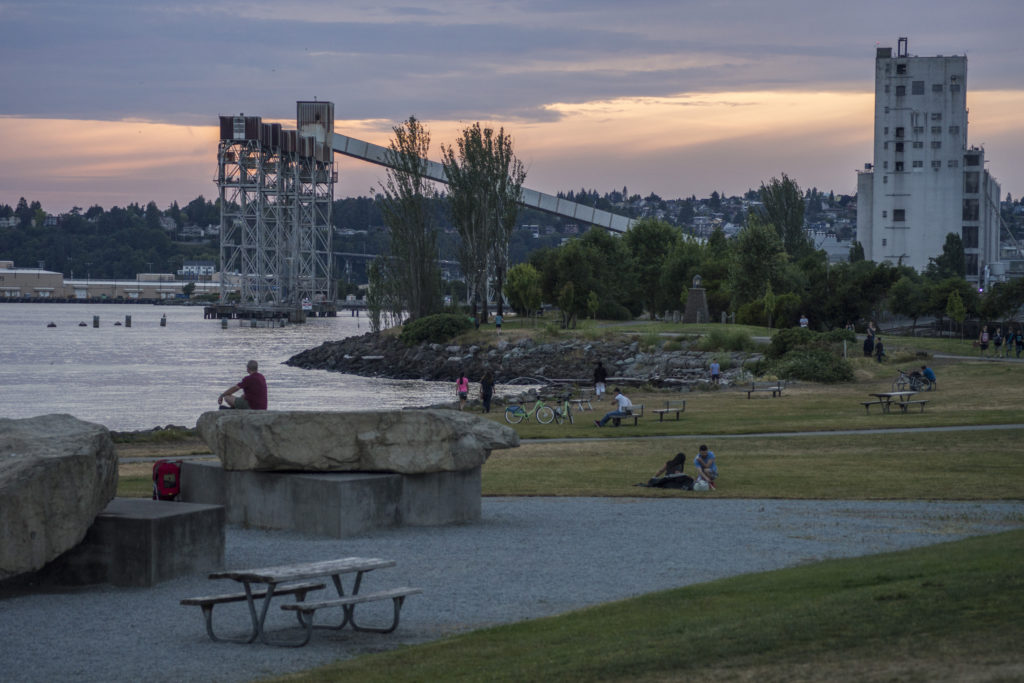
Architect
Charles Anderson Landscape Architects and Architecture Design Team
Type of Area
Bay
Land/water interaction
Sandy Beach
Riprap
Promenade
Built Environment Types
Highly built
Low green
Scale of Impact
District/ neighbourhood
City
Regional
Intervention Scale (Spatial)
Linear development – multiple interventions
Project Types
Urban waterfront restoration
Outdoor recreation
Public green space regeneration
Urban/ Rural
Inner urban area
Visibility and Openness
Partly enclosed
Part horizon
Reconnecting the City to the River
This extensive park system in Seattle, Washington, USA comprises of the Olympic Sculpture Park, Elliot Bay Trail, Myrtle Edwards Park, Centennial Park and Elliot Bay Park and was constructed between 2001-2007. The designs were created by Charles Anderson Landscape Architects and Architecture Design Team for the consortium of Seattle Art Museum, Seattle Parks and Recreation and the Port of Seattle.
A series of sub-parks starts at the Olympic sculpture park and ends with the Elliot Bay park. This connected park system connects with the dense urban fabric at the northern and southern ends but is (or was) completely cut off from the city itself by railway tracks that run parallel to it.
The connection which has been improved since the original completion by the construction of the Olympic sculpture park. This is the main point where Myrtle Edwards park connects with the city structure to allow pedestrians and cyclists access over a bridge across the railway tracks.
The layout of the park, which is generally narrow and linear consists of a separate, winding asphalt pedestrian and cycle path, equipped with resting and viewing points, lawns, sculptures and benches. The water edge consists of riprap forming small bays with gravel or shingle beaches in between which driftwood was placed to create a habitat for fish and invertebrates.
The terrestrial part includes viewing points, a rose garden, groups of trees, a cafeteria and shelters good for bird watching. The various points of attraction provide opportunities to linger, obtain direct contact with water and to relax. There are unobstructed distant views of the bay. The main activities the site promotes are walking by the bay, jogging, cycling, picnicking, photography, fishing, dog walking and exercising.
Perception and Meaning
Legibility
Sense of Place
Place attachment
Accessibility
Knowledgeability
Health and Wellbeing
Restorativeness
Increased physical activities
Place affordance
Sense of being away
Tranquillity
Interaction with Water
Visual
Tactile – touching

Website of the project:
http://www.seattle.gov/parks/find/parks/myrtle-edwards-park
Google map reference
The ratings for this project show that access to the park has limitations due to the railway line immediately behind it and it is not very visible from the city side. The design quality does not have the kind of unique originality of some examples we have looked at but is fine otherwise.
The cultural heritage aspects are rated lower due to the lack of any elements to include. The park is not especially full of facilities but does not need to be for it to be successful given its location. It has little lighting and is rather exposed. It is rated very well for health and well-being apart from the sense of being away, given its industrial location.
The water connection is mainly visual as the sea is not suitable for activities and access to and from the water is limited. It has plenty of opportunities for physical activity but not formal sports nor water sports.
Overall it is a good example of an informal park making good use of a place to enhance the natural qualities but does not have the cachet of the other promenades featured here, which is why in some respects it is lower rated
